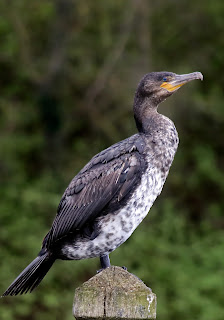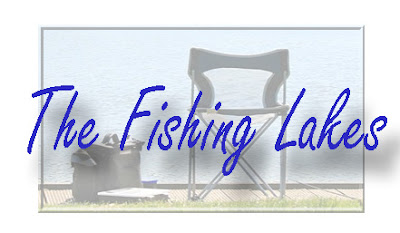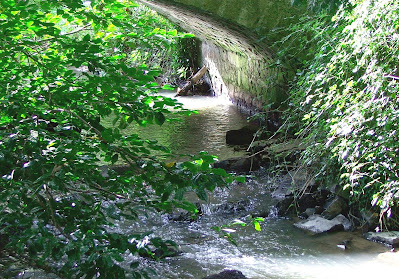Nature at Corkagh: Birds
Throughout the year the melodious song of our native birds echo across Corkagh. Some of these birds will be familiar as regular visitors to nearby gardens but there are several species that are rarely seen in suburban settings. Here are some of the birds you can expect to find at Corkagh together with images I have captured over recent years.
Before I go on I have to acknowledge a wonderful app without which I would never have been able to identify some of Corkaghs birds. Free and Highly recommended.
Wren
 |
 |
Blackbird

Their song is one of the nicest and the easiest to hear at Corkagh. The male sings each morning and evening from early spring to summer. He sings to attract a mate and also to signal his territory. The female is brown and her beak more orange than yellow. Blackbirds are members of the Thrush family. They can be seen digging about in the undergrowth for worms or feeding on Ivy berries in Autumn. In winter the native flock are joined by migrants from Scandinavia. Though territorial during the breeding season in winter it is common to see several feeding together.
 |
| Female Blackbird |
Robin
 |
| Male feeding female mate. |
Goldcrest
The Thrush
There are two types of Thrush: the Song Thrush and the Mistle Thrush. They can be heard singing from the highest trees and can often be seen foraging for worms in the grass or feeding on berries in Autumn. The Song Thrush can be heard singing in competition with the Blackbird from Corkaghs hedgerows and trees.
Bullfinch
The male Bullfinch has a stunning ruby breast and black head. The female is similar but her breast is a more muted colour. They feed on the buds of Corkaghs trees in Spring and the seeds in Autumn and Winter. Because of their liking for the buds of fruit trees they were an unwelcome visitor to orchards. In Spring you may spot these birds feeding on the flower buds of Hawthorn trees. In Autumn they can be seen on the ground where they feed on the helicopter seed pods of Sycamore and Ash trees.
Goldfinch
Goldfinch singing at Corkagh on midsummer eve.
 |
| Greenfinches feeding on seeds. |
Chaffinch
The Chaffinch male has a russet breast which make them easy to spot while the female has a more nondescript buff colouring. They are common garden visitors but are more likely to nest in the park. In terms of food preferences they are the least fussy of birds eating everything from seeds to worms and even snails eggs.
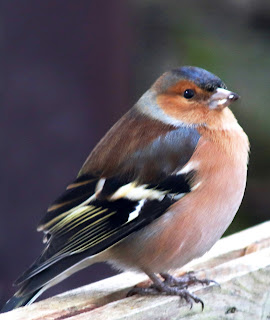 |
| Male Chaffinch |
Great Tits and Blue Tits
These familiar birds are numerous around the park but it is easiest to see them when they visit garden feeders. They actually prefer insects and will easily catch a tasty passing butterfly for lunch!
 |
| Blue Tit. Smaller than a Great Tit with a yellow belly and dark line across its eyes. |
 |
| The Great Tit is the largest of the Tits and has a distinctive black crown. . |
Coal Tit
Long-tailed Tit

This lovely bird is common at Corkagh but rarely spotted unless you know where to look. They fly in small flocks, twittering loudly as they move from tree to tree around the wetlands area and Swan Lake. They are one of the smallest of the tits but their exceptionally long tail makes them easier to identify. Beautifully coloured with distinct pinkish buff tones on their wing feathers.
Swallows and House Martins
Blackcap
About the same size as a Robin but generally a shy bird that prefers the cover of dense woodland. This bird is most common in the East and South of the country. They are a migratory species with our summer breeding pairs flying to Southern Europe for winter. Meanwhile Blackcaps from Northeastern Europe migrate here to over-winter. The male is distinguished by his black crown while the female has a brown crown. They are occasional visitors to garden feeders especially during winter.
 |
| Female Blackcap |
The House Sparrow
This noisy little bird lives in large flocks and is probably as happy in local gardens as in the park. They will visit garden feeders throughout the year and are happy to eat just about anything that is available. They co-operate as a flock when raising their babies unlike most birds. Though they seem very common and numerous they are in fact on Birdwatch Irelands Amber list which indicates that there is some concern regarding their conservation status.
 |
| Pair of House Sparrows, the one in the background is a female, she is a lighter colour and doesn't have the males distinctive black face. |
Dunnock
This little bird (about the same size as a Robin) is similar to a House Sparrow and is sometimes known as a Hedge Sparrow. Unlike the Sparrow it has a narrow black beak and a grey crown. The Dunnock is a solitary bird that spends much of its time foraging in the undergrowth for small insects and spiders. It has a lovely song that could easily be confused with a Robin.
 |
Reed Bunting
The Reed Bunting is a small bird who favours reed fringed wetlands areas and can be found around Corkaghs lakes especially near the Blue Bridge. About the same size as a Sparrow and quite similar. The male has a striking black face during the breeding season. They feed on insects and seeds.
 |
| Female Reed Bunting |
 |
| Male Reed Bunting in winter. |
Chiffchaff
This small bird migrates to Ireland from Southern Europe and Africa in Spring and can be heard singing in Corkaghs taller trees from April till it returns South for the winter. It is a rarely seen but common resident at the park. The Chiffchaff feeds on the insects and spiders to be found among Corkaghs trees and hedgerows.
Willow Warbler
Treecreeper
Pied Wagtail
This widespread and common little bird is as likely to be spotted in the carpark as in the fields. They feed mostly on insects and flies but in winter they will scrounge whatever has fallen from the garden feeder.
Woodpigeon
The cooing sound of this common bird is familiar to almost everyone. In winter our native birds are joined by thousands of winter migrants from Northern Europe. While generally seen in twos and threes they can form flocks of several hundred in good feeding areas. Grey Wagtail A beautiful bird who's name belies its striking yellow breast. This bird is never far from water where it feeds on a variety of insects. I have spotted it around the fishing lakes and on the banks of the Camac. Raven A pair of Ravens have been seen at Corkagh in early 2023 near the Fishing Lakes. Buzzard This large bird of prey counts Corkagh as part of its territory though it ranges far and wide along the Naas Road and the quarry at Kingswood towards the canal and Clonburris. This photo was taken August 2024 as a pair soared high in the sky over the fishing lakes. Kingfisher I have caught glimpses of this lovely creature near the fishing lakes. They hunt along the Camac from Corkagh to Kilmatead. This photo was taken at the lakes August 2024. Woodpeckers There have been reports of Woodpeckers at Kilmatead/Corkagh but as yet unconfirmed. |
Birds of the Lakes and Wetlands
Since the lakes were created in 2001 the park has welcomed many new species of Ducks and Water birds.
Mallard DuckProbably the most familiar duck but actually not the most numerous species in Ireland. The Mallard is on Birdwatch Irelands Amber list meaning that there is some concern for its conservation.
 |
| Male Mallard |
 Ducks the same size as Mallards can sometimes be seen at Swan Lake. I believe these to be Mallard/Domesticated Duck hybrids. |
There is a small population of Moorhens on Corkaghs lakes and they build their untidy nests in the rushes. Moorhens eat a combination of plants, insects and even frogs and small fish! They are generally timid creatures but will defend their nests bravely when challenged. While similar to Coots they are easily identified by their red and yellow beaks.
 |
| There are always Moorhens to be found near the Blue bridge. |
Mute Swan
This bird has truly made Corkagh its home in recent years and we now have several resident and not overly shy Herons. They make their nests in the parks tallest trees near the Rose garden.
 |
Little Grebe

 | |
 |
Tufted Ducks
So called because of their noticeable ponytail. The black and white male sports the longer once while the brown female keeps hers on the shorter side!! You can see these ducks at both of Corkaghs lakes.
 |
| Male Tufted Ducks |
Coot
A familiar bird of Corkaghs lakes especially when it goes on the offensive: first raising its wings to give it the appearance of greater size then skipping furiously across the pond at the trespasser! They are distinguished from the similarly sized Moorhen by their white beak and crown. In addition to our own native population large numbers of Coots from Northern Europe winter here. It is interesting to note that coots have been known to attack and kill some of their offspring if food is in short supply.
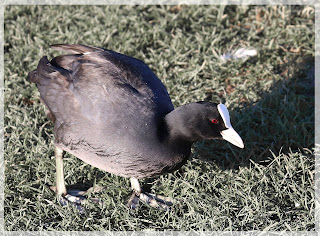 |
 |
| Baby Coot with parent. |
Teal Duck While some Teal Ducks breed here most arrive from Northern Europe to over-winter. They are a shy bird that seem to sense human presence even from a distance and quickly move towards the centre of the lake or the most outlying reed beds. The male is brightly and distinctively coloured with a very noticeable green eye patch. Teal arrive at the Blue Bridge lake in midwinter and remain till early Spring.  |
| Cormorant The Cormorant is usually known as a bird of coastal areas but they do visit inland waterways and lakes outside of the breeding season. There are some Cormorants that visit the canal and it is a short flight from there to the lakes at Corkagh via the pond at Grange Castle. The best place to see this striking bird, if it makes an appearance, is at the fishing lakes. Irelands native population of Cormorants is added to in winter with the arrival of large numbers from Northern Europe.  |
| Cormorant at the Fishing Lakes, March 2022 |
 |
| Cormorant at the fishing lakes April 2023 |
Black-tailed Godwit
 |
All Images strictly Copyright of the author
Scroll down for more Corkagh Park pages.




















































